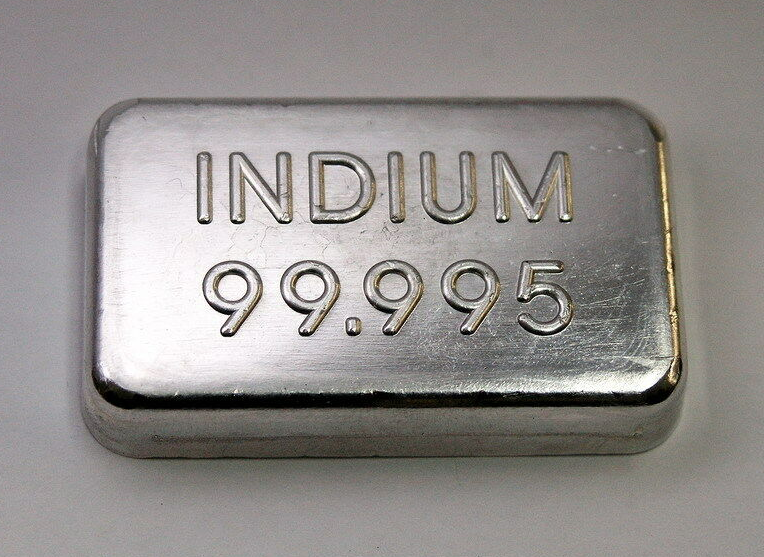Indium is one of the rare earth metals. The rare metal was discovered late and rather accidentally. Surprisingly, it took a very long time for the commercial value of indium to be fully recognized.
Today, indium is one of the most sought-after raw materials in industry due to its properties and is by far not only urgently needed for semiconductor production.
Indium – a chance find
Indium was first discovered in 1863 by the chemists Ferdinand Reich and Hieronymus Theodor Richter, who at the time were spectroscopically examining various metals in search of thallium. But instead of the characteristic emission lines of thallium, they found a blue spectral line that could not be assigned to any previously known element.
In reference to the light blue color of the spectral line, the newly found element was named indium. However, it was not until a year after the discovery that Hieronymus Theodor Richter succeeded in isolating pure indium.
Almost 70 years only a curiosity
The true value and benefits of the newly discovered rare earth metal remained unrecognized for a long time. Instead, the isolated metal was seen as a real curiosity for almost 70 years. Thus, an indium sample was even shown at the World’s Fair in Paris in 1867, but without knowing the true use and value of the metal.
It was only after various chemists became interested in indium and experimented in particular with its properties as a hardening element for treating ferrous metal surfaces that indium mining began on a larger scale towards the end of the 1920s.
Indium occurrence
Indium is a rare metal. Its occurrence in the earth’s crust is roughly equivalent to that of mercury or silver. Indium mainly occurs as a component in zinc sulfide and other ores, although the amount of indium contained is vanishingly small at only about 100 ppm.
Most commonly, the rare metal is obtained as a byproduct of zinc mining.
Experts estimate the world’s remaining reserves of indium in the earth’s crust at around 16,000 tons. However, probably only about 11,000 tons of this can be mined economically.
Traces of rare earth metal can be found in the earth’s crust all over the world. However, the largest deposits are in Canada, China and Peru.
The use of indium
Initially, indium was used primarily as a protective alloy for metals. Nowadays, rare earth metal is mainly needed in the electronics industry and communication technology.
For example, the metal plays a major role in the manufacture of cell phones, in semiconductor technology, and also in the production of lasers, integrated circuits and light diodes.








